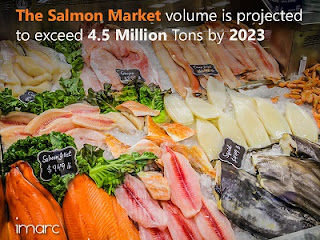Baby Food and Infant Formula Market Estimated to Cross US$ 69 Billion by 2023 - IMARC Group

Over the past few years, the global baby food and infant formula market has witnessed a positive growth. Some of the factors that are further fuelling the market growth are rising health concerns, soaring female employment rates, rapid urbanisation, increasing disposable incomes, etc. Request for a sample copy of this report: https://www.imarcgroup.com/baby-food-infant-formula-market/requestsample Baby food is a soft and easy-to-digest mash of vegetables, fruits, cereals and meat. It is meant for the consumption of babies in order to suffice their everyday nutritional needs. On the other hand, infant formula refers to a substitute of breast milk which can be served till the age of two years. It is manufactured via adding fatty acids, vitamins and prebiotics to processed milk. Since babies lack teeth as well as developed muscles for chewing, baby food and infant formula are intentionally made with a semi-liquid consistency. Moreover, these formulations offer ease of use and po

